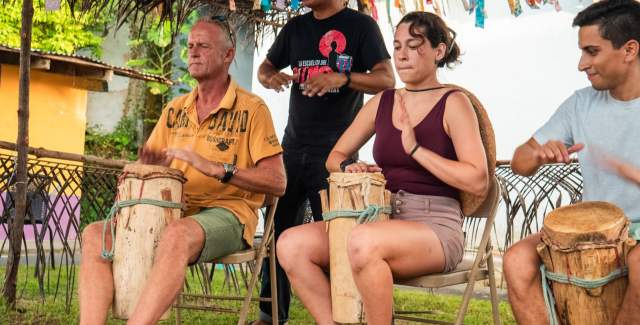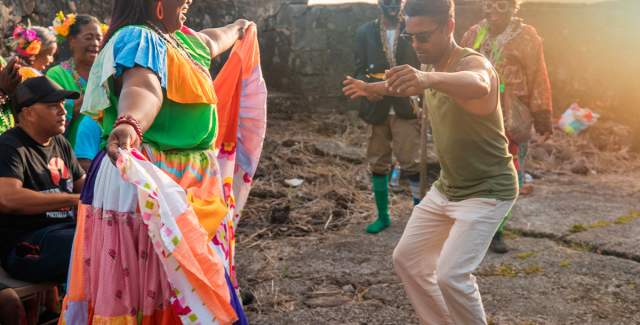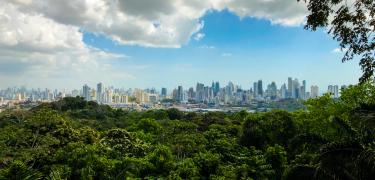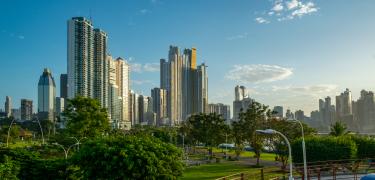Portobelo, Land of Congos
Portobelo, on the northern coast of Panamá, is a cultural treasure that shines with the vibrant congo heritage. This charming town is surrounded by lush vegetation and crystal clear waters, it breathes the rhythm and the authenticity of a community rooted in its traditions. Here, the celebration of life and history is woven into every dance, every dish, and every smile. When you visit Portobelo, the closest Caribbean destination to the capital, don’t miss the opportunity to get to know the incredible congo culture, its rhythms, its flavors, and its enthralling history.

Learn About Its History
In the XVI century, thousands of African slaves arrived in Portobelo at the hands of the conquerors.

With the passing of time, the Africans took the Spanish language and the Catholic faith as their own, although they never renounced their ancestral traditions or settled for the status of slaves. As a result, a culture of their own emerged, and it’s so rich that it was declared Intangible Cultural Heritage of Humanity by UNESCO.

During your visit to Portobelo, go all over its museums, such as Museo de la Memoria Afro Panameña (Museum of Afro-Panamanian Memory) and other cultural centers to understand all the symbolism and the art behind the so-called congo culture. In the studio of Portobelo, look at the drawings embellished with rhinestones and mirrors, the artists will be proud to tell you about this tradition. Enjoy the music based on percussion with its own rhythms such as cumbia, el terrible and el atravesado.

Live Their Culture
There is one unique experience you can’t miss: a show of Diablos and Congos in a place called Maroon settlement or palenque that evokes the shelters of Maroons.
It’s a mixture of music and dance that tells, with humor, the story of the struggle for freedom.
The diablos (devils), dressed in red and black and wearing terrifying masks, personify evil, which for the black people was the slaver. On the other hand, the congos represent enslaved people and they have many characters such as Reina Congo or Conga Queen and Juan de Dios, her husband; the Mininas, two dancers that play members of the Royal Court; the Cazador (Hunter), who symbolizes the figure of the executioner and, among many other characters, the Pajarito (Little Bird) who is looking for the right place to establish the Maroon settlements and brings news of freedom in code.

Their Beliefs
When they arrived on the continent, the Afro-Colonials were converted to the Catholic faith, a faith they still practice with great fervor. In Portobelo, the saint they are devoted to is the Nazarene or Black Christ, who is portrayed in a dark wooden figure.

The origin of the saint is a legend, and he has a special altar in the church of San Felipe.
If you visit Portobelo on October 15, you’ll see how the town fills up with pilgrims dressed in purple tunics who arrive walking from all over the country to celebrate the great Black Christ’s day.
If you want to have a different experience, the last Sunday of every month you’re invited to participate in Congo Mass. In these celebrations, held to commemorate the ancestors, you’ll see groups of singers and dancers who enliven the religious celebration. It’s an experience you won’t want to miss.

Their Flavors
You can’t leave Portobelo without trying its typical cuisine: octopus stewed in coconut milk, snail or spider crab accompanied by rice with pigeon peas, lobster seasoned with coconut or fried fish with crunchy patacones (slices of fried banana).
The aromas from the kitchen will make your mouth water.
Visit Portobelo to live the experience of congo culture, to understand the spirit and the talent of its people, and to catch the bug of their rhythms and dances full of passion and feeling.







